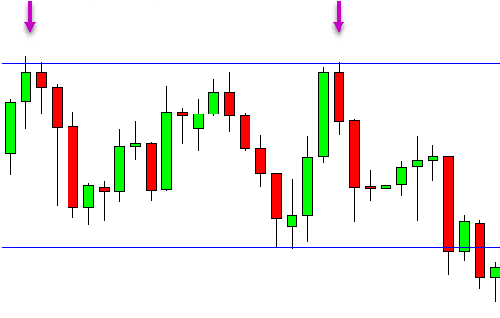What is a Reversal?
There are five main areas where the word REVERSAL is used:
-
-
- Reversal Trading Strategies
- Reversal Vasectomy
- Reversal Tubal Ligation
- Reversal Mortgage
- Aging Reversal
-
On this site you will find definitions, tips and other resources in all these REVERSAL areas.
What is a reversal trading strategy?
A reversal trading strategy is a technique used by traders to identify potential trend reversals in financial markets. The strategy is based on the idea that when a trend has been established in a market, it will eventually reverse and move in the opposite direction. The goal of a reversal trading strategy is to identify these trend changes as early as possible and take advantage of them.

Reversal Indications
In a reversal trading strategy, traders look for specific chart patterns or technical indicators that suggest a potential trend reversal. These patterns and indicators can include:
- Double tops or bottoms: A chart pattern where the price reaches a high (or low) twice, and then reverses.
- Head and shoulders: A chart pattern where the price forms three peaks, with the middle one being the highest.
- Divergence: A situation where the price moves in the opposite direction of an indicator, such as the Relative Strength Index (RSI).
- Candlestick patterns: Certain candlestick patterns, such as the Hammer or the Engulfing pattern, can indicate a potential reversal.
Once a potential reversal has been identified, traders will look for confirmation of the trend change before entering a trade. This can involve waiting for a certain level to be broken, or for the price to move above or below a moving average. READ MORE
What is a reversal vasectomy?
A reversal vasectomy, also known as vasectomy reversal, is a surgical procedure that aims to restore a man’s ability to have children after he has previously undergone a vasectomy. During a vasectomy, the vas deferens, the tube that carries sperm from the testicles to the urethra, is cut or sealed to prevent the sperm from being ejaculated during sexual intercourse.
In a reversal vasectomy procedure, the vas deferens is reconnected, allowing sperm to pass through and mix with semen again. The procedure is performed under local or general anesthesia and typically involves a small incision in the scrotum to access the vas deferens. The cut ends of the vas deferens are then carefully reconnected using microsurgical techniques.
While reversal vasectomy is generally successful, it is not guaranteed, and success rates vary depending on a number of factors, including the length of time since the original vasectomy, the type of vasectomy performed, and the presence of scar tissue. It is important for men considering reversal vasectomy to discuss the procedure with a qualified healthcare provider to determine if it is a viable option for them. READ MORE
What is a Reversal Tubal Ligation?
Tubal ligation is a surgical procedure that involves cutting, blocking, or sealing the fallopian tubes in order to prevent pregnancy. Reversal tubal ligation, also known as tubal reanastomosis or tubal sterilization reversal, is a surgical procedure to reconnect the fallopian tubes after a previous tubal ligation procedure.
During a reversal tubal ligation, the surgeon will make an incision in the abdomen to access the fallopian tubes. The blocked or cut ends of the tubes will be reconnected with small sutures, which will allow eggs to travel through the tubes and potentially be fertilized by sperm, increasing the chances of natural conception.
It is important to note that not all women who have had a tubal ligation are good candidates for reversal tubal ligation, and success rates can vary depending on various factors such as age, length of the remaining fallopian tubes, and the method used for the initial tubal ligation. It is also a more complex surgery than a tubal ligation and requires a skilled surgeon. READ MORE
What is a reversal mortgage?
A reverse mortgage is a type of home loan that allows homeowners who are at least 62 years old to access the equity they have built up in their homes. Instead of making monthly payments to a lender, as with a traditional mortgage, the lender pays the borrower in a lump sum, a line of credit, or monthly payments.
The amount that can be borrowed is based on the age of the borrower, the value of the home, and the current interest rates. The loan does not have to be repaid until the borrower dies, sells the home, or permanently moves out. At that time, the loan is typically repaid by selling the home or using other assets.
Reverse mortgages can be a useful tool for seniors who want to supplement their retirement income, pay for healthcare expenses, or make home repairs or modifications. However, they can also have significant fees and interest rates, and the borrower’s heirs may be responsible for repaying the loan if the borrower dies or moves out of the home. As with any financial decision, it’s important to carefully consider the pros and cons of a reverse mortgage and seek advice from a financial professional before making a decision. READ MORE
